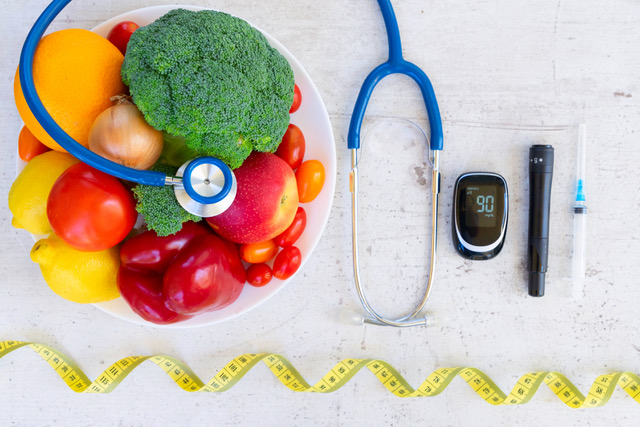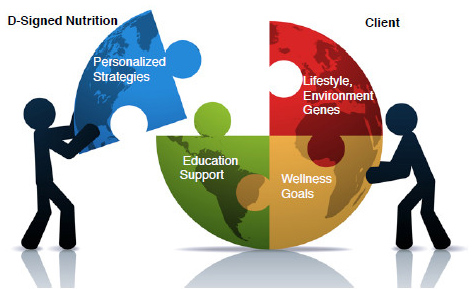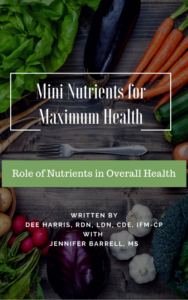
When it comes to diabetes, prevention is the best cure. At D-Signed Nutrition, we take bloodwork seriously because it’s the first indication of shifts in your health. Typically, doctors don’t tell you when your Hemoglobin A1C or fasting blood sugar is getting higher, but once it’s in the prediabetes or even the diabetes range an alarm may go off. Seeing a hemoglobin A1C above 5.7% or a fasting blood sugar above 99 mg/dl indicates prediabetes. The optimal range for the Hemoglobin A1C is 4.6 – 5.3% and for fasting glucose, it’s 75 – 86 mg/dl. When these numbers are noticeably inch higher, it’s a great time to start changing your diet and lifestyle.
One patient was successfully able to lower their Hemoglobin A1C from 5.6% to 5.2% in one year due to making changes such as:
1. Eating Low-Glycemic Foods
2. Pairing Carbs with Proteins and Healthy Fats
3. Limiting Refined Carbohydrates and Sugars
4. Eat Plenty of Fiber
5. Regular Exercise
6. Stress Management
7. Supplementation
Eating Low Glycemic Foods
Low glycemic foods have a lower impact on our blood sugar levels. Foods with a glycemic index of 55 or less are mostly fresh fruits, non-starchy vegetables, nuts, low-fat dairy, beans, and some whole grains like brown rice and quinoa. Foods to limit with a moderate to high glycemic index of 56 and higher are potatoes, corn tortillas, white bread, bagels, white rice, breakfast cereals, and baked goods.
High glycemic foods lead to a drastic increase in blood glucose levels, which calls for a large amount of insulin from the pancreas released into the bloodstream. A high insulin level leads to stubborn weight gain and excess visceral fat, which is the fat around the midsection and organs. It’s difficult to lose weight with high insulin levels.
Pairing Carbs with Proteins and Healthy Fats: Glycemic Load
Similar to the glycemic index, the glycemic load of a food is directly related to how fast the blood sugar rises based on how we pair our foods. We can lower the glycemic index by combining foods, which equals glycemic load. Eating carbs like pasta, crackers, or fruit alone will have a higher glycemic load, therefore, they will increase your blood sugar levels more than if they are paired with proteins , fats and/or fiber. Having half of a banana with almond butter or crackers with 2 oz of cheese or a balanced pasta dish with protein and vegetables is ideal. Pairing foods correctly lowers the glycemic load and keeps our blood sugar balanced throughout the day.
Limit Refined Carbohydrates and Sugars
Refined carbohydrates and sugars spike your blood sugar fast, and then after about two hours your energy drops. This leads to craving even more high-sugar foods as your body wants another burst of energy. This can lead to a vicious cycle of cravings and crashing.
Eat Plenty of Fiber
Fiber is important for so many reasons. It aids digestion, promotes gut health, lowers cholesterol, and balances blood sugar levels. Incorporating more fiber in your diet means a more whole-food and nutrient-dense diet. Getting at least 25 grams of fiber per day is the goal. Aim to eat several servings of non-starchy vegetables daily like salad, sauteed greens, asparagus, Brussels sprouts, tomatoes, and peppers. Eat fruits, whole grains, nuts, and seeds, and even supplement with a fiber powder to support balanced blood sugar levels.
Regular Exercise
Exercise enhances insulin sensitivity, promotes weight loss and improves muscle mass. What is insulin sensitivity? It’s the gauge of how well your cells respond to insulin. This is important since insulin aids glucose out of your bloodstream and into your cells to be used for energy.
Stress Management
Stress impacts blood sugar levels but raising cortisol and throwing our bodies into fight or flight. While it is difficult to eliminate stress, we recommend stress management techniques such as mindfulness meditation, deep breathing, yoga, prayer, or walks in nature to reduce stress levels.
Supplementation
Chromium and berberine are two top supplements that help balance blood glucose. Chromium is a trace mineral that can be found in foods like nuts, brewer’s yeast, and some whole grains. It has a much greater impact on glucose metabolism and insulin sensitivity when taken as a supplement at mealtime.
Berberine is a compound derived from several plants like goldenseal and Oregon grape. It has many benefits. It can lower the post-meal blood sugar spike, fasting blood sugar levels, and even triglycerides. Over time, it lowers the hemoglobin A1C and has profound effects on one’s health due to its benefits in both glucose and lipid metabolism.
Don’t forget vitamin D. Low vitamin D levels increase risk of pre-diabetes and diabetes. Check vitamin D on your labs at least yearly. Ideal lab values are between 60-80 ng/ml. If they are low, consider supplementation.
As always, assessing the whole person is necessary when initiating a health improvement plan . We individualize each nutrition and lifestyle plan. Lifestyle, diet, stress management, and quality supplements are all pieces of the puzzle to put you on the road to normalizing blood sugar, weight and felling your best!
Resources
1. https://www.rupahealth.com/post/a-functional-medicine-approach-to-prediabetes?utm_source=google&utm_medium=cpc&utm_campaign=20893116874&utm_content=&utm_term=&gad_source=1&gclid=Cj0KCQjwir2xBhC_ARIsAMTXk85bWWpmeBKZyPUQnjlXY0vc2zxylw78DYMY4pzUQEPaWeFSfHRti0YaAs5CEALw_wcB
2. https://www.health.harvard.edu/healthbeat/a-good-guide-to-good-carbs-the-glycemic-index
3. https://www.ncbi.nlm.nih.gov/pmc/articles/PMC3782965/
4. https://www.ncbi.nlm.nih.gov/pmc/articles/PMC9360912/#:~:text=Hyperglycemia%20during%20stress%20is%20a,resistance%20and%20decreased%20insulin%20secretion.



